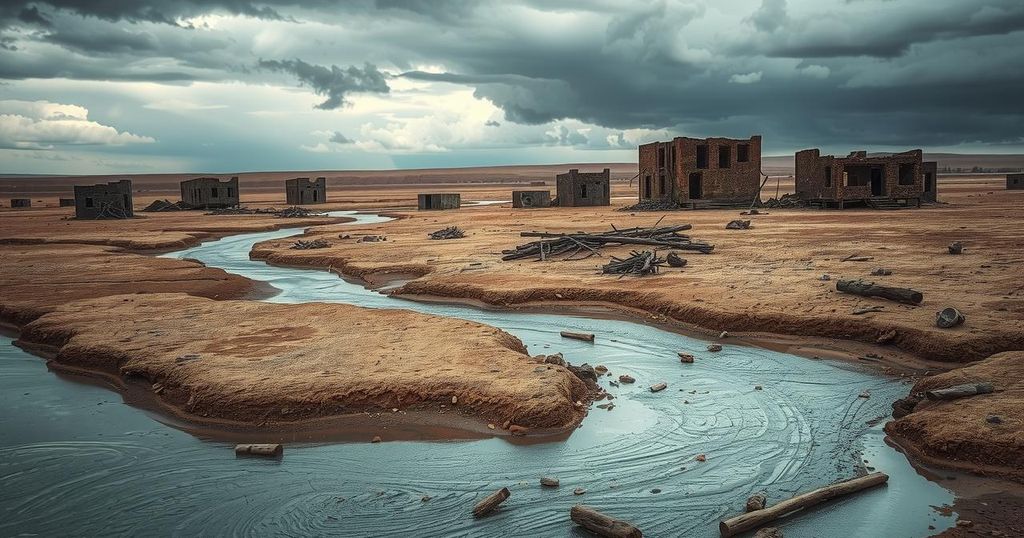The conflict between the DRC and Rwanda is escalating, with M23 rebels seizing Goma and increasing tensions. After decades of violence, the geopolitical interests in rare minerals contribute to the crisis, exacerbated by the historical context of the Rwandan genocide. As the international community intervenes, internal corruption and military failures in the DRC compound the situation, leaving millions displaced. A recent ceasefire holds potential, but a deeper resolution addressing root causes is necessary.
A potential conflict is brewing in Africa, particularly between the Democratic Republic of the Congo (DRC) and Rwanda, primarily fueled by the Rwandan-backed M23 rebel group. Their recent takeover of the city of Goma has escalated tensions significantly, with bodies being left in the streets amid the violence. The geopolitical ramifications are severe, as France and the UK urged for the immediate withdrawal of Rwandan forces from the DRC, while South Africa warned that further Rwandan aggression could be considered a declaration of war.
Root causes for the escalating crisis include vying interests in rare minerals such as coltan and cobalt, alongside historical grievances stemming from the Rwandan genocide. Rwanda alleges that Hutu extremists implicated in the 1994 genocide are still active in eastern Congo, while the DRC accuses Rwanda of seeking to exploit these resources through its M23 proxy. The failure to achieve diplomatic peace talks has fueled the violence.
Domestically, DRC’s President Félix Tshisekedi faces intense scrutiny as his military struggles against the M23 group, compounded by widespread corruption within the army. Regular soldiers, notably underpaid and demoralized, have observed mercenaries who are better compensated capitulating in battle. This internal turmoil is causing a catastrophic humanitarian crisis, as millions are displaced and violence escalates.
Internationally, while some nations have historically supported Rwanda for its relative stability, recent actions under President Paul Kagame display aggressive territorial ambitions under the guise of combating extremist threats. There are increasing fears that Kagame aims to topple the Congolese government entirely, which raises alarms about broader security implications in the region. A ceasefire was recently declared, yet substantial progress towards a sustainable resolution must transpire to address the underlying tensions and grievances that continue to drive conflict.
The ongoing tension between the DRC and Rwanda has deep historical roots and is compounded by complex socio-political dynamics, including lessons from the Rwandan genocide. Historical narratives surrounding ethnic tensions and the competition for valuable resources play critical roles in the conflict. The interplay of corruption, military failures, and international dynamics further complicates regional stability, making it essential to understand these factors to grasp the broader implications of the conflict.
In summary, the looming conflict between the DRC and Rwanda is driven by a combination of historical grievances, competition for lucrative mineral resources, and internal corruption within the DRC’s military. The recent escalation of violence, including the fall of Goma to M23 rebels, underscores the urgency for a cohesive international response that addresses not only the immediate conditions but also the systemic issues fostering the conflict. A lasting solution will require a united front from the global community and meaningful dialogue among regional powers.
Original Source: theweek.com
